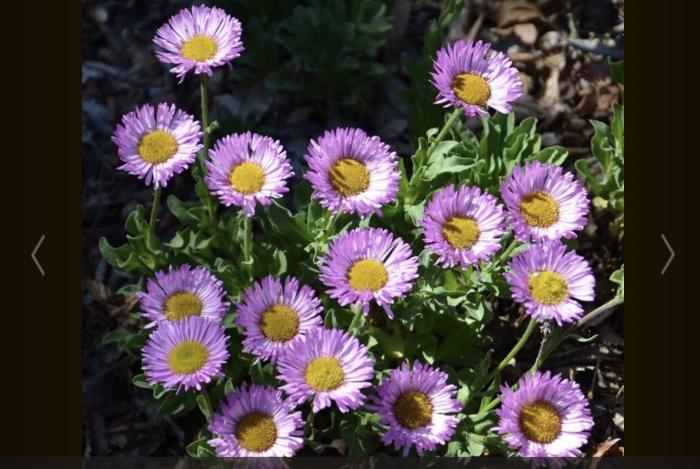Erigeron glaucus 'Sea Breeze'
Seaside Daisy

Description
An evergreen perennial that forms clumps 6-10 inch tall by 2 feet wide with gray-green foliage and 3 inch wide lavender pink daisies with chartreuse to yellow centers from spring to fall. Plant in a location that receives full sun to light shade along the coast or light shade in warmer inland locations. Fairly drought tolerant but looks more robust with occasional irrigation. It is hardy to at least 10 F. When plants get lanky, cut back to 1 to 2 inches of stem in late fall. Tolerates coastal conditions. This cultivar was selected by Frederick Yates from a seed bed of unidentified and unpatented hybrids of Erigeron glaucus in a cultivated area of Congleton, Cheshire, England in 1992 and it received US Plant Patent PP12,076 on September 4, 2001, a patent that has since expired. Seaside daisy is native along coastal bluffs, dunes and beaches below 500 feet in the coast shrub community from the Channel Islands and mainland Santa Barbara County north to Oregon. As noted in Carol Bornstein, Dave Fross and Bart O'Brien's "California Native Plants for the Garden": Seaside daisy performs best in coastal gardens and works well in mixed borders, meadows, or containers. In richer soils, it looks better and blooms more profusely than it will in sandy or rocky soils. In inland gardens, plants in full sun flower spectacularly throughout spring but often burn to a crisp during summer … individual seaside daisy plants have a useful garden life span of two to seven years. The name for the genus comes from the Greek words 'eri' meaning early or perhaps 'erio' meaning wooly and 'geron' meaning "old man" which alludes to the bristly or wooly seed heads. The specific epithet is the Latin word (from the Green 'glaukos') meaning silvery" or "bluish-green".
Sun
Full, Half
Water
Low
Growth Rate
Moderate
Soil Type
Sandy, Rocky
Soil Condition
Rich, Well-drained, Dry
Soil pH
Neutral
Adverse Factors
n/a
Water Saving Tip:
Dig-up patches of weeds and undesirable grasses from turf areas.
Use water to grow the turf you want, not the weeds you don't want! Once you have eliminated what you don't want, add sod or over-seed to repair the bare areas.